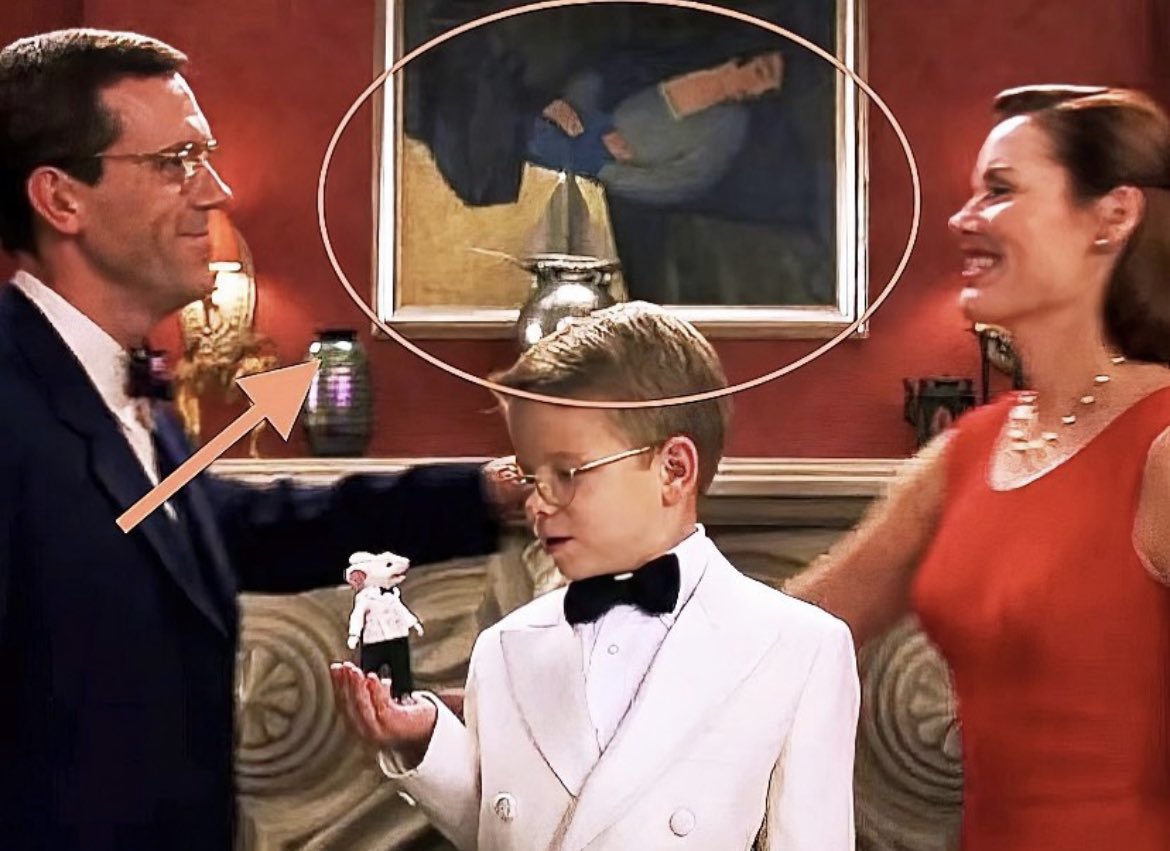In 2009 while watching “Stewart Little” (1999), Hungarian art historian Gergely Barki saw the painting “Sleeping Lady with Black Vase” by Róbert Berény. It had been missing for 90 years and had been used as a prop.
It was the original.
The painting had disappeared in the 1920s, but Barki recognised it immediately, even though he had only seen a faded black-and-white photo from an exhibition in 1928.
He sent a flurry of emails to staff at the film’s makers, Sony Pictures and Columbia Pictures, and received a reply from a former set designer on the film – two years later. “She said the picture had been hanging on her wall,” Barki said. “She had snapped it up for next to nothing in an antiques shop in Pasadena, California, thinking its avant-garde elegance was perfect for Stuart Little’s living room.”
In 2009 while watching "Stewart Little" (1999), Hungarian art historian Gergely Barki saw the painting "Sleeping Lady with Black Vase" by Róbert Berény. It had been missing for 90 years and had been used as a prop. It was the original.
— Historic Vids (@historyinmemes) June 14, 2023
The painting disappeared in the 1920s, but… pic.twitter.com/FkhQIGSYZQ
Sleeping Lady with Black Vase (Hungarian: Alvó nő fekete vázával) is a 1927–1928 oil painting by Róbert Berény. It is a depiction of the painter’s wife reclining asleep in a blue dress behind a table on which is set a black vase. The painting was sold in 1928 and was considered lost after World War II.
It was auctioned as a Berény in the mid-1990s and, with the artist’s work valued cheaply at this time, was later sold to Sony Pictures, who used it in the 1999 film Stuart Little as set dressing in the house of the main character. In 2009, art historian Gergely Barki identified the painting while watching the film with his daughter, and tracked it down. It was owned by a set designer, who sold it to an art collector, who sold it at auction in 2014 for $285,700.
The painting is a portrait of Berény’s second wife, Eta (née Breuer) and is made in the art deco style. It has been described as among Berény’s best work. The sleeping subject wears a typical 1920s hair style and a blue dress. She reclines away from a table on which a black vase is set. It is painted in oil on a canvas in landscape orientation measuring 64 by 87 centimetres (25 in × 34 in). It is signed by the artist in the lower left.
Art historian Judit Virág describes Sleeping Lady with Black Vase as a “perfect” representation of 1920s European art incorporating elements of contemporary French, German, and Russian art trends.

